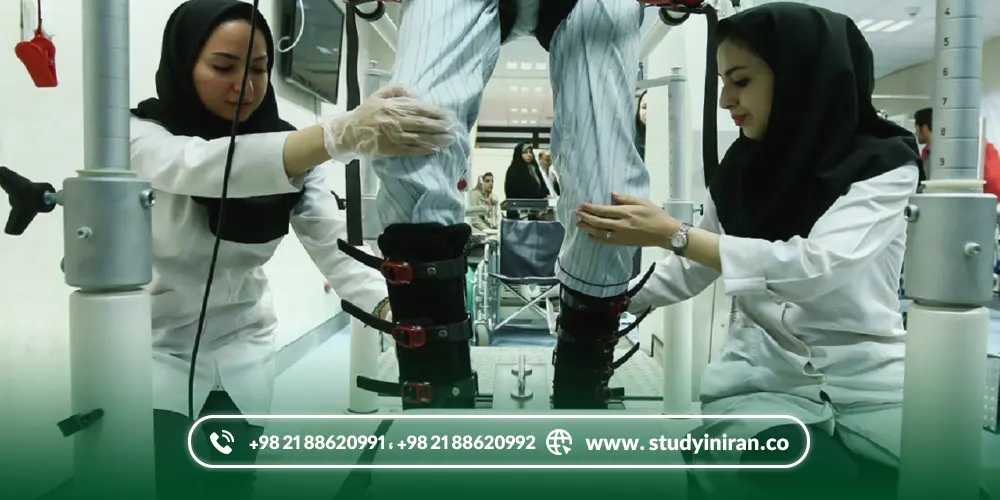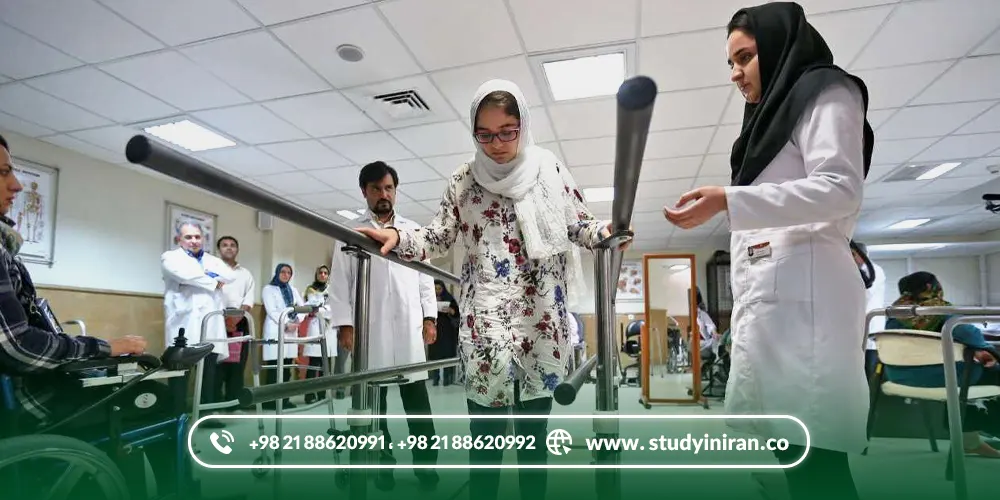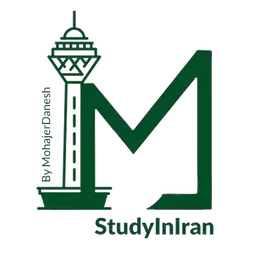- Overview of Physiotherapy in Iran
- Why Study Physiotherapy in Iran?
- Goals and Vision of Physiotherapy in Iran
- Roles and Responsibilities of Physiotherapy Graduates in Iran
- Duration of Physiotherapy Studies in Iran
- Admission Requirements for Physiotherapy in Iran
- Application Deadlines for Physiotherapy in Iran
- Physiotherapy Program Structure in Iran
- Best Universities for Studying Physiotherapy in Iran
- Final Note
- FAQs – Studying Physiotherapy in Iran
Study physiotherapy in Iran offers a pathway into one of the most in-demand areas of healthcare, addressing the growing need for non-drug treatment methods. According to the World Health Organization (WHO), roughly 10% of people worldwide live with some form of physical disability—yet trained physiotherapists remain in short supply. Iran’s physiotherapy programs are designed to train skilled professionals who can deliver effective rehabilitation, reduce reliance on medication, and enhance overall public health. Graduates are prepared to improve patients’ quality of life both in Iran and abroad, making this field not only a strong academic and career choice but also a role with clear social and humanitarian impact.
Overview of Physiotherapy in Iran

Physiotherapy is a branch of rehabilitation sciences focused on diagnosing and treating physical disorders through evidence-based methods and effective patient interaction. Practitioners use physical agents such as light, electrical currents, heat, and mechanical techniques—including therapeutic exercises and movement-based treatments—to reduce symptoms and speed up recovery.
As a key rehabilitation service, physiotherapy plays a vital role in restoring both individual health and social well-being. Graduates are trained to take a holistic, community-focused approach, helping patients adapt to their environment, improve daily function, and prevent future physical issues.
Physiotherapists draw on a wide range of therapeutic approaches to meet the treatment and advisory needs of their patients. Staying connected to academic and research institutions is essential, enabling them to keep their knowledge current and apply the latest scientific advances in patient care.
Why Study Physiotherapy in Iran?
Studying physiotherapy in Iran offers several advantages for international students:
- Recognized Postgraduate Programs
Multiple universities offer master’s degrees in physiotherapy, providing advanced and specialized training opportunities.
- Diverse International Community
Over 24,000 international students choose Iran for higher education, creating a vibrant, multicultural environment and opportunities to build connections worldwide.
- Affordable Education and Scholarships
Iran offers more than 87 affordable master’s programs and 51 scholarship opportunities, making study both academically rewarding and financially accessible.
Goals and Vision of Physiotherapy in Iran
The undergraduate physiotherapy program in Iran is designed to prepare professionals who can:
- Assess patients, identify problems, and deliver targeted physiotherapy exercises.
- Diagnose physical disorders and provide appropriate treatment.
- Offer rehabilitation and preventive care to reduce the risk of physical disabilities.
The overall aim is to improve both individual and community health, with graduates playing a key role in meeting global health standards.
Roles and Responsibilities of Physiotherapy Graduates in Iran
Physiotherapy graduates in Iran can work across various healthcare and academic settings, with responsibilities generally falling into three main areas:
- Clinical Treatment Under Medical Supervision
Working alongside physicians and other healthcare professionals, physiotherapists design and implement rehabilitation programs and corrective exercises. They use techniques such as therapeutic exercise, electrotherapy, heat therapy, and mechanical methods to improve patient outcomes.
- Education
Physiotherapists play a key role in teaching patients and their families how to prevent and manage physical injuries. Some also teach in universities and training centers, preparing the next generation of professionals.
- Research
Graduates may contribute to research in academic or clinical institutions, focusing on innovative treatment methods, disability prevention, and improving patients’ quality of life.
Duration of Physiotherapy Studies in Iran

An undergraduate physiotherapy degree in Iran takes four years. Students split their time between classroom study and clinical training in hospitals and rehabilitation centers, gaining the knowledge and practical skills needed for professional practice.
Admission Requirements for Physiotherapy in Iran
To start an undergraduate physiotherapy degree in Iran, applicants must meet both academic and language criteria. International students also need to show proof of language skills.
Language Requirements
- TOEFL PBT: 525
- TOEFL iBT: 69
- IELTS: 5.5
Required Documents
- Official high school transcripts – GPA of 3.0+ is preferred.
- High school diploma or equivalent.
- CV with personal, educational, and work details.
- Cover letter outlining study plans and goals.
- Scanned copy of passport (main page, PDF/JPEG/PNG).
- Passport-style photo that meets university guidelines.
Application Deadlines for Physiotherapy in Iran
Most top Iranian universities, including Tehran University of Medical Sciences, use a rolling admission system, reviewing applications throughout the year. However, each intake has set deadlines:
- September intake – Apply by June 31
- February intake – Apply by October 31
Applicants are advised to prepare their documents and start the process well in advance to secure their place.
Physiotherapy Program Structure in Iran
Admission to the undergraduate physiotherapy program is through an entrance exam. Students complete 130 credits over eight semesters (four years), divided as follows:
- General courses – 22 credits
- Basic sciences – 41 credits
- Specialized courses – 43 credits
- Clinical internship – 24 credits
Courses are delivered in different formats: lectures, practical classes, combined theory/practical sessions, and clinical training. Each theory credit equals 17 hours, each practical credit equals 34 hours, and each clinical internship credit equals 68 hours.
This structure ensures students gain both a strong academic foundation and the hands-on experience needed for real-world clinical work.
Best Universities for Studying Physiotherapy in Iran

Physiotherapy programs in Iran are offered by several leading medical universities recognized both nationally and internationally. Many of these institutions appear in global rankings and provide opportunities for scholarships, making study in Iran both high-quality and affordable—though strong academic performance is usually required for funding.
Tehran University of Medical Sciences (TUMS)
- Subject rank in Iran: 282
- National rank: 630
- Global rank: Top 3% worldwide
TUMS is Iran’s most prestigious medical school and a top choice for physiotherapy.
Mashhad University of Medical Sciences
- Subject rank in Iran: 458
- National rank: 886
- Global rank: Top 5% worldwide
A major academic hub in northeastern Iran, offering strong rehabilitation programs.
Iran University of Medical Sciences
- Subject rank in Iran: 461
- National rank: 1089
- Global rank: Top 6% worldwide
A respected Tehran-based university known for its high-quality teaching and research facilities.
Shahid Beheshti University of Medical Sciences
- Subject rank in Iran: 468
- National rank: 1087
- Global rank: Top 6% worldwide
Offers specialized faculties and teaching hospitals, creating an ideal environment for physiotherapy studies.
Shiraz University of Medical Sciences
- Subject rank in Iran: 491
- National rank: 889
- Global rank: Top 5% worldwide
One of Iran’s oldest medical schools, well-regarded for both teaching and research in physiotherapy.
Final Note
Studying physiotherapy in Iran offers a valuable combination of academic training, hands-on clinical experience, and access to some of the region’s most respected medical universities. With growing demand for rehabilitation services, the field provides strong career prospects both in Iran and internationally.
Iran’s medical universities equip students with specialized instruction, clinical internships, and modern facilities to prepare them for professional practice. Tuition and living costs are also lower than in many other countries, making it an affordable choice without compromising quality.
For international applicants, Study in Iran is the official resource for detailed information on admissions, tuition, scholarships, and student life. Its expert guidance helps students navigate the process and start their physiotherapy studies with confidence.
FAQs – Studying Physiotherapy in Iran
A bachelor’s degree in physiotherapy takes four years (eight semesters) and includes theoretical courses, practical training, and clinical internships.
Key institutions include Tehran, Mashhad, Iran, Shahid Beheshti, and Shiraz Universities of Medical Sciences.
Applicants must hold a high school diploma and pass the national entrance exam (Konkur). International students also need proof of language proficiency (Persian or English) and valid academic and identity documents.
For international students, tuition ranges from USD 1,000 to 3,000 per year. Annual living expenses, including housing, food, transportation, and other costs, are about USD 4,000–8,000.
Yes. Some universities and the Iranian government offer scholarships. Detailed information is available through Study in Iran.
Graduates can work in hospitals, rehabilitation clinics, sports centers, and healthcare facilities, or pursue research and teaching roles in academic institutions.
Yes. Some universities offer English-taught programs for international students, though most courses are in Persian.
Degrees from accredited Iranian medical universities are recognized in many countries, enabling graduates to pursue further studies or work abroad.






0 Reply To “study physiotherapy in iran”